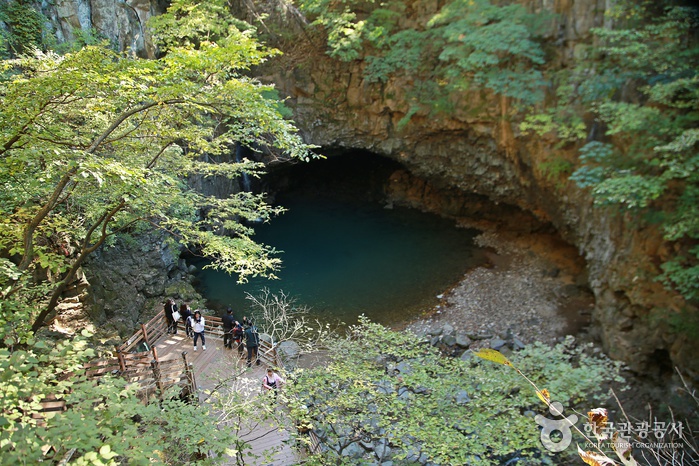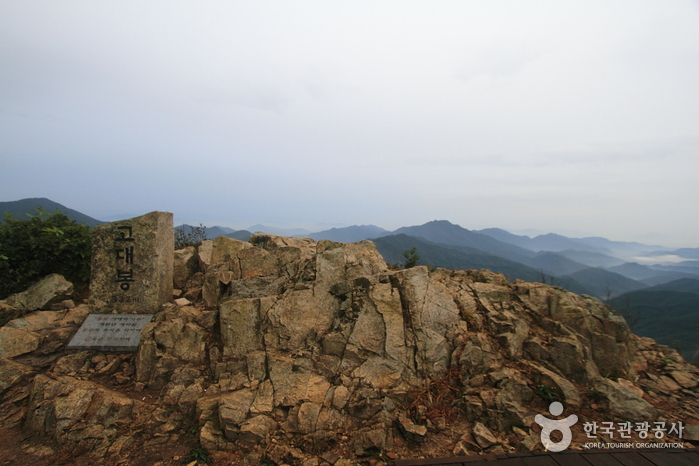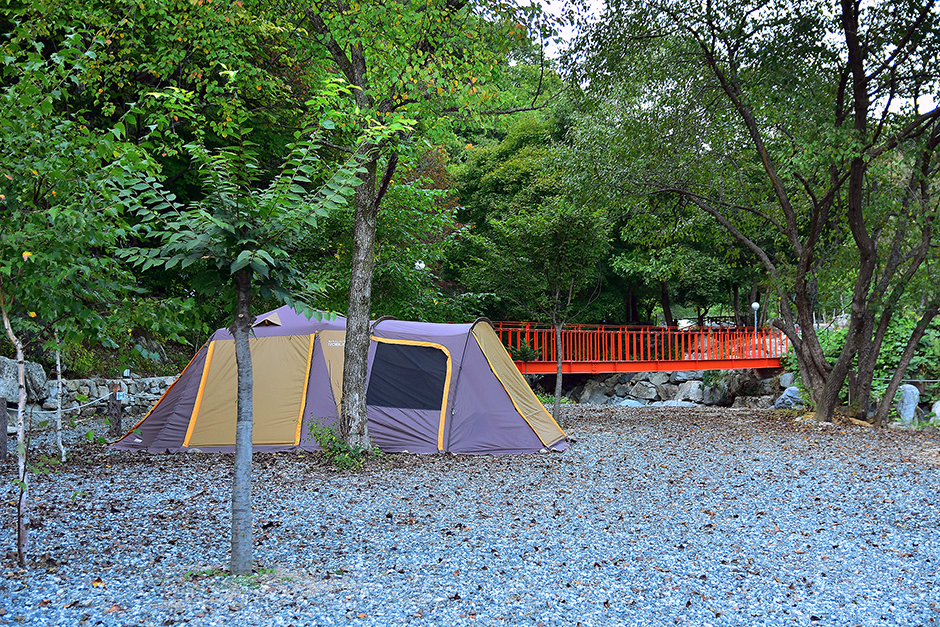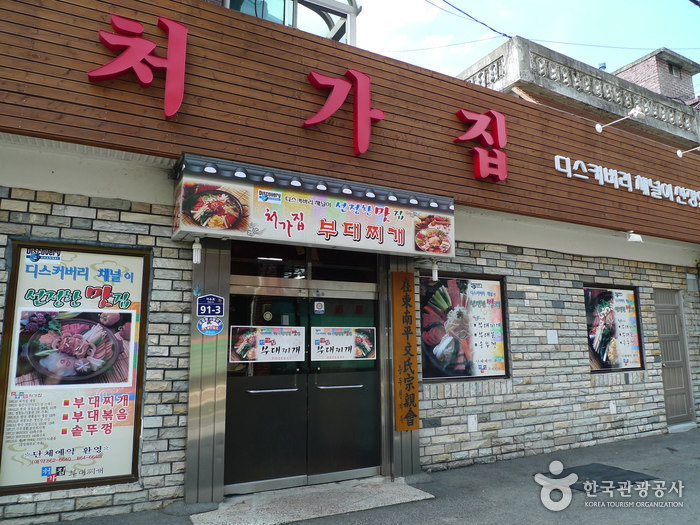Bidulginangpokpo Falls-Hantangang River Geopark (비둘기낭폭포-한탄강 국가지질공원)
18.7Km 2019-09-03
Daehoesan-ri, Pocheon-si, Gyeonggi-do
+82-31-538-2312
Bidulginangpokpo Falls, Natural Monument No. 537, is located within a small valley. The waterfall is surrounded by grand columnar joints. The landscape appears quite mysterious and serene, earning it a spot as a poplar filming site for historical dramas. The falls gets it's name ("Pigeon Falls" in Korean) from the story of many wild pigeons nesting in the caves around the waterfall. Other say the name comes from the area's shape. During heavy rainfall, the road to the waterfall is closed, so checking the weather before visiting is recommended.
Godaesan Mountain (고대산)
18.9Km 2021-07-20
Sinseo-myeon, Yeoncheon-gun, Gyeonggi-do
+82-31-839-2061
Godaesan Mountain (alt. 832 meters) is located next to Sintan-ri Station, which is the railroad disconnection point of the Gyeongwon Line. It is also on the way to Geumgangsan Mountain. Godaesan is ideal for mountain hiking because of its natural beauty and well-preserved
ecosystem. Moreover, this is the only mountain in South Korea on which the North Korean territory can be seen.
There are several theories about the origin of the mountain's name. One is that the mountain had been referred to as "keungore" (big whale) in the past by local residents. Another is that the mountain looks like the
banggorae (smoke duct) of a traditional Korean heating system when seen from the Sintan area; this is because the mountain's deep valleys resemble the furrows under that house that facilitate the passage of hot air to heat the room above. On a topographic map, the mountain was also marked as "Gotae" (like the constellations high above).
Godaesan also has a dense forest, making it a suitable source of timber and charcoal. Because of its abundant forest resources, a jumak (a tavern or inn that served food and liquor and provided lodging to travelers) village was formed here. The place was well-known for
charcoal production prior to the Korean War.
On November 4, 1907, 150 soldiers from the Korean militia fought a fierce battle with the 8th Company of the Japanese Army's 20th Infantry Regiment in Yeoncheon. After the fight, the Korean militia were scattered throughout the jumak village. Later on, 60 of them engaged in a
fierce battle again with the Japanese soldiers on Godaesan. This is a place imbued with the brave spirit of the Korean people.
Damteo Oji Camping Ground (담터오지캠핑장)
19.1Km 2024-11-04
409 Damteo-gil, Gwanin-myeon, Pocheon-si, Gyeonggi-do
Cheogajip Budaejjigae (처가집부대찌개)
19.3Km 2024-02-06
91-3 Eosu-ro, Dongducheon-si, Gyeonggi-do
031-862-6640
Operating since 1984, Cheogajip Budaejjigae specializes in budae jjigae (sausage jjigae) in Dongducheon. Their unique take on this dish involves the use of red chili paste, setting it apart from regular budae jjigae. Their budae jjigae includes generously long sausages, with the quantity tailored to the number of diners. Another crowd-pleaser is the budae bokkeum (stir-fried hams and sausages), a stir-fried assortment of various sausages, ham, bacon, udon noodles, and vegetables, which particularly appeals to the younger customers.
Sintan-ri Station (신탄리역)
19.4Km 2025-02-01
4, Godaesan-gil, Yeoncheon-gun, Gyeonggi-do
+82-1544-7788
Sintan-ri Station, located on the Gyeongwon Line between Daegwang-ri and Baengmagoji Stations, opened on July 10, 1913. It was part of North Korean land after 1945, but was returned to South Korea in 1951. A sign labeling the station as the final station on the line was installed in 1971. With the opening of Baengmagoji Station on November 20, 2012, the station lost its title as the last station. However, many people still consider it as such, with many visitors coming to see the old sign.





 English
English
 한국어
한국어 日本語
日本語 中文(简体)
中文(简体) Deutsch
Deutsch Français
Français Español
Español Русский
Русский